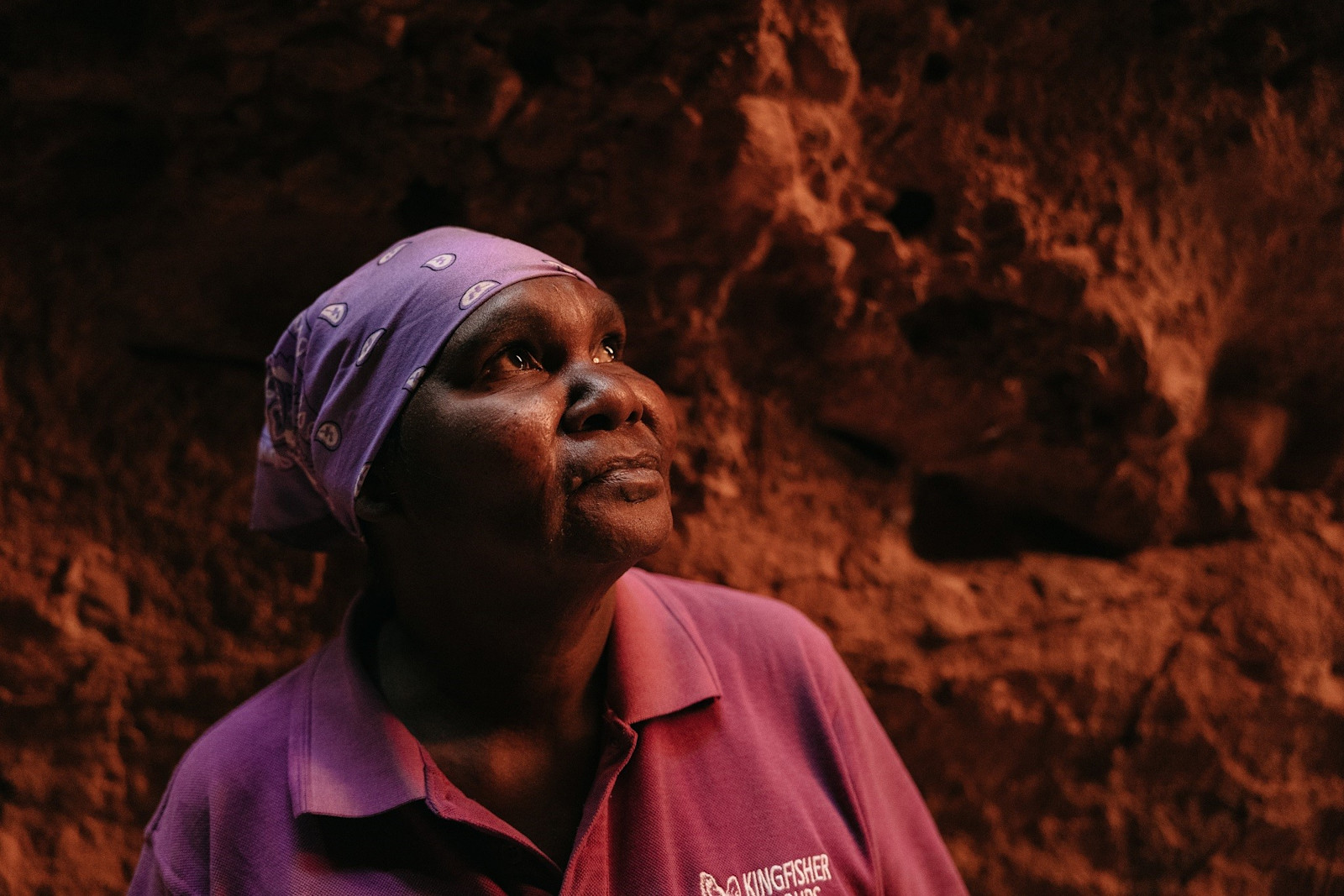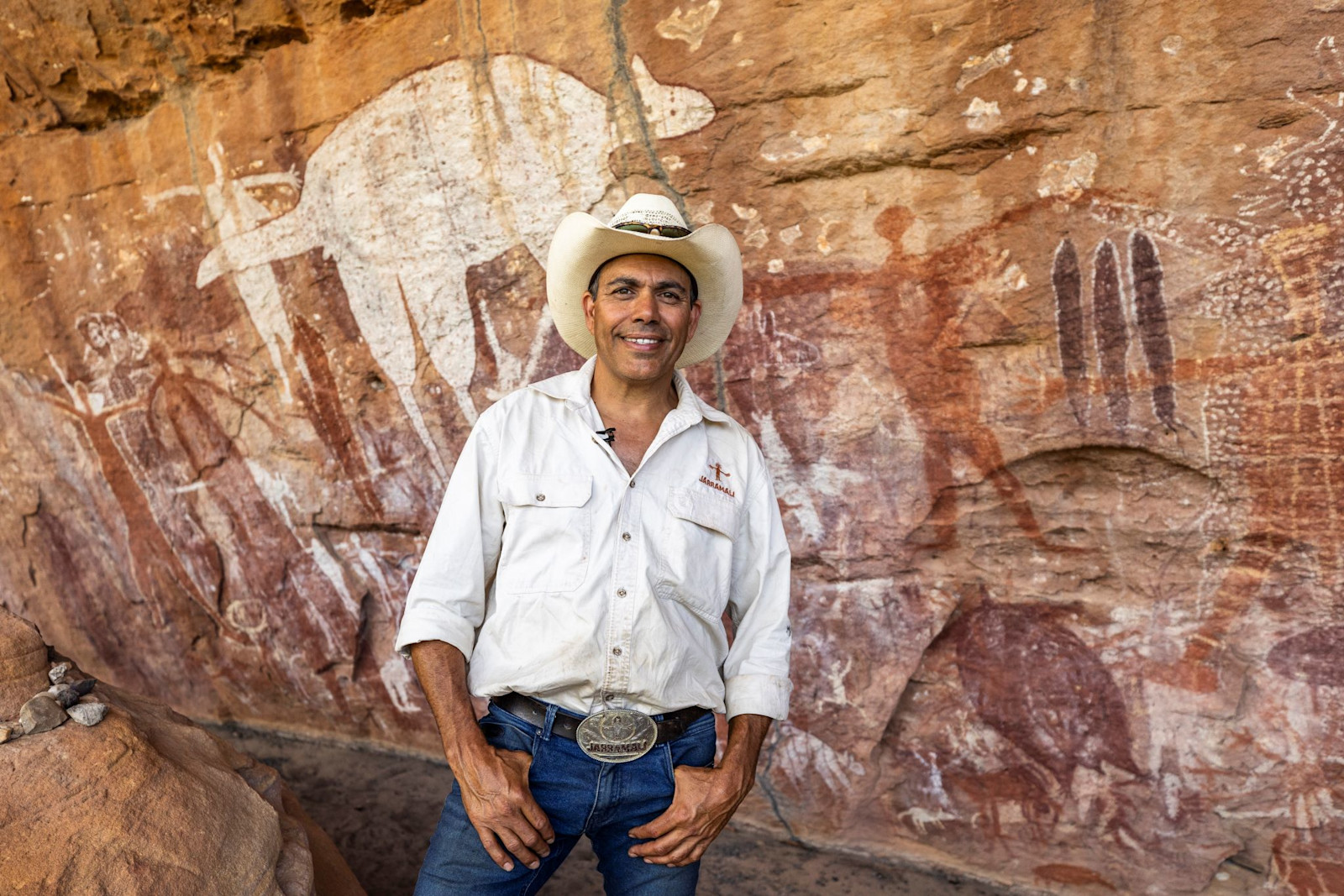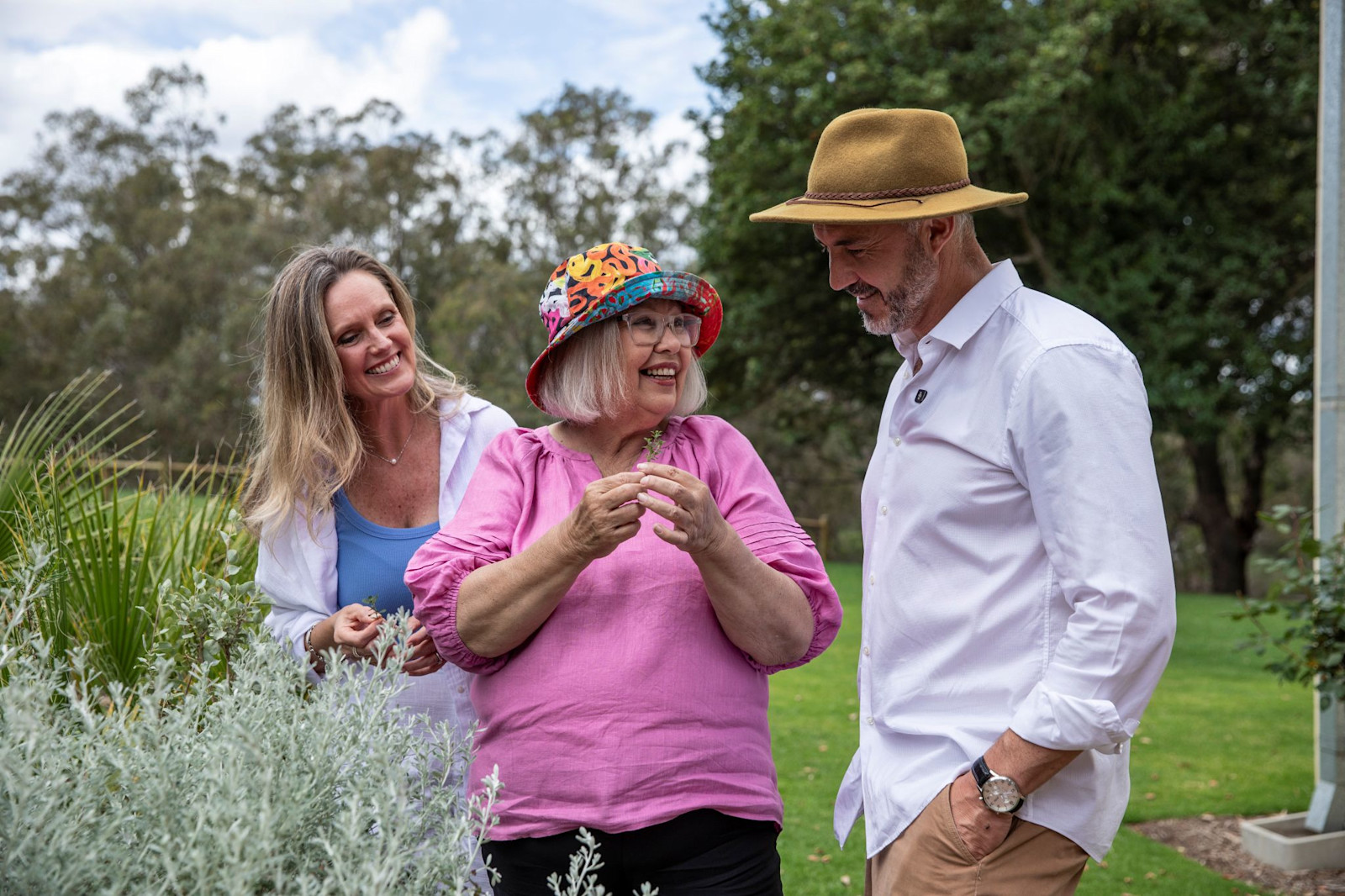Drift back to the Dreamtime on a Great Barrier Reef cruise with a difference
The natural wonder of the Great Barrier Reef is perhaps seen most memorably through the snorkel mask of an Indigenous Sea Ranger guide.
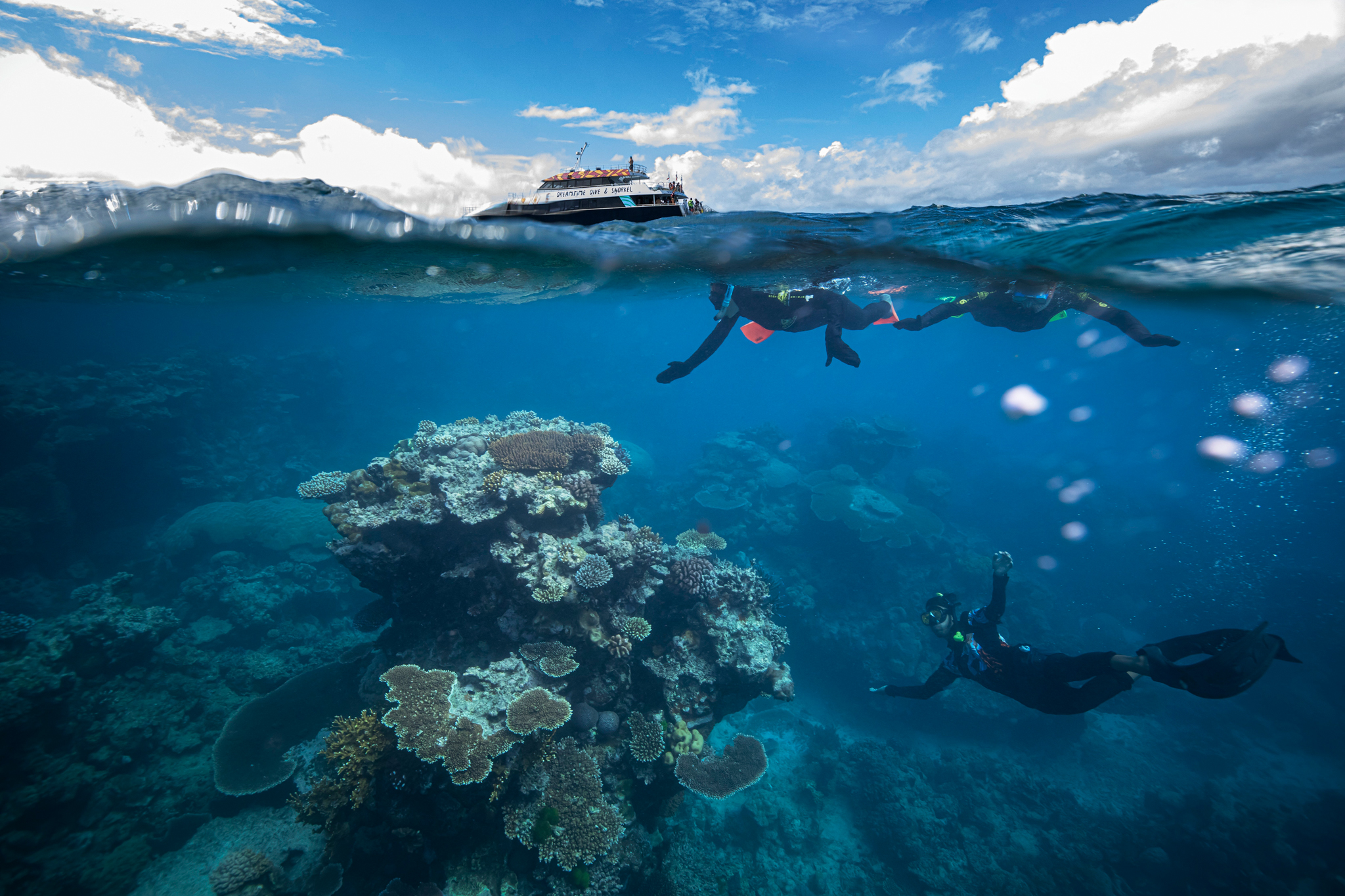
Dreamtime Dive & Snorkel, Great Barrier Reef, QLD © Tourism Australia
A spotted ray digs itself into the sand below as I hover above it, flukes fluttering like butterfly wings, sending clouds of sand adrift into the current. “We call her Millie,” Sissy Myer says later, when I’ve described my encounter. “Did you see the turtle?” I shake my head, no, and she looks disappointed. There was plenty else to gaze upon through my snorkel mask, though: parrot fish, clams and iridescent blue staghorn coral, as well as giant clams the size of my torso, their luminescent speckled mantles wedged into the seabed.
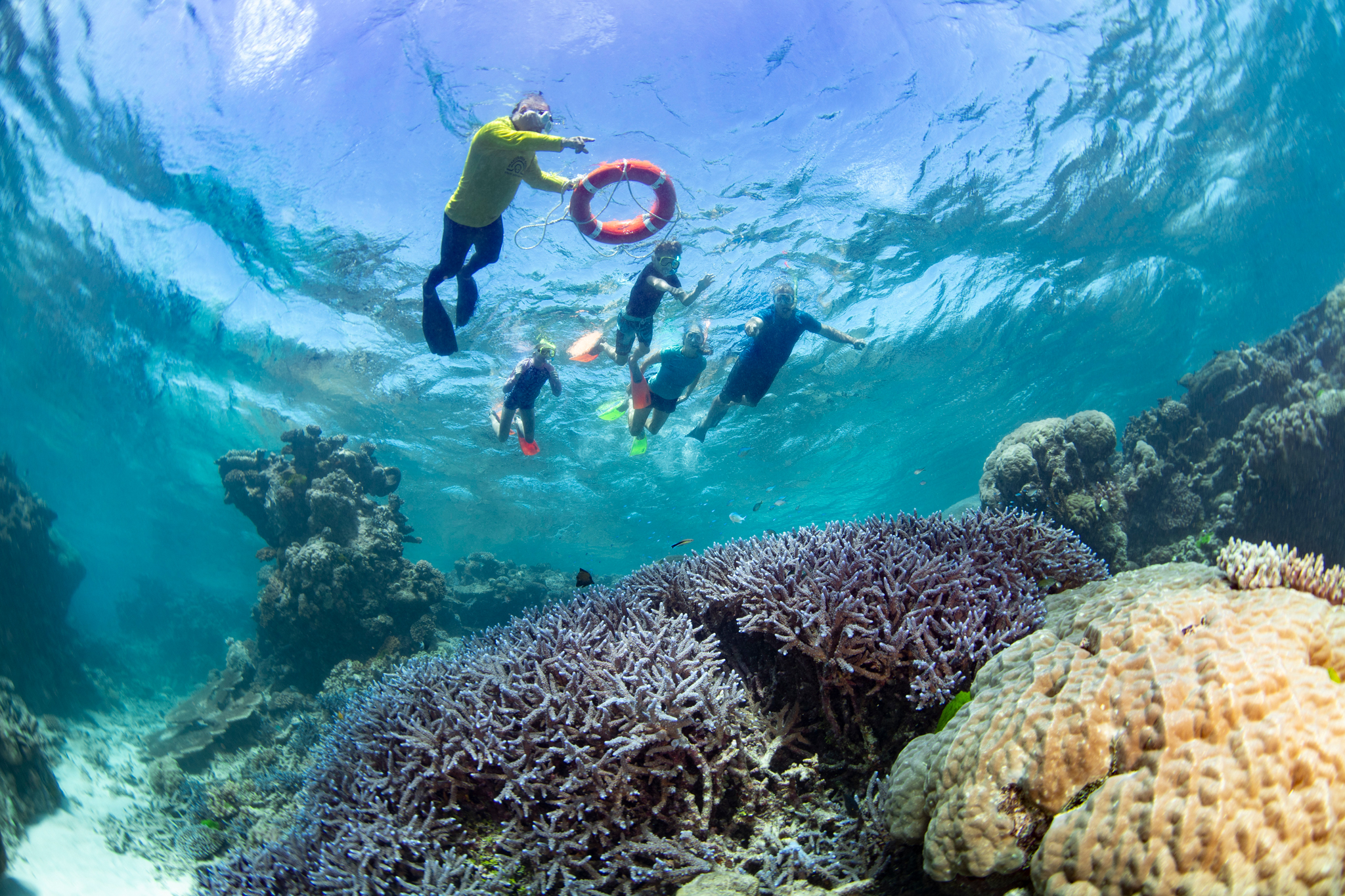
Dreamtime Dive & Snorkel, Great Barrier Reef, QLD © Tourism and Events Queensland
Coral Country
Sissy is an Indigenous Sea Ranger guide with Dreamtime Dive & Snorkel, which runs day trips to the Great Barrier Reef from Cairns/Gimuy. These guides provide a connection between visitors to the World Heritage-listed reef, and the area’s Traditional Owners, whose Sea Country extends from the Frankland Islands just south of Cairns/Gimuy to the Torres Strait Islands 850km (530 miles) away in Queensland’s far north.
Indigenous Sea Rangers from four Traditional Owner groups, the Gimuy Walubara Yidinji, Gunggandji, Mandingalbay and Yirrganydji people, as well as Torres Strait Islanders, mingle with passengers as we steam towards the reef’s outer boundary, some two hours from the Australian coastline.

Dreamtime Dive & Snorkel, Great Barrier Reef, QLD © Tourism and Events Queensland
All hands on deck
We’re passing Cape Grafton when Indigenous Sea Rangers Fred Mundraby and Tim Creed sit down beside me. Creed explains the importance of fire to his people while Mundraby starts rapidly spinning a firestick in a hole gouged into a block of wood. Despite the 20-knot headwind, he has the beginnings of a fire in his lap. He presses the tip of the stick into my palm so I can feel the heat.“Fire is everything,” Creed asserts. “We use it to make spears, hardening the barb by heating it in hot coals. We use fire to manage the bush. And we cook roo tails on it too!”
Looking back towards Cape Grafton, he points out the distinct outline of a saltwater crocodile whose head, neck and shoulders are obvious as the light catches the contours of the ridge. He then demonstrates how the silhouetted peaks of Fitzroy Island line up with the profile of his cupped hand. “No need for a GPS out here,” he says. “We know where we are from the shape of the landmarks.”
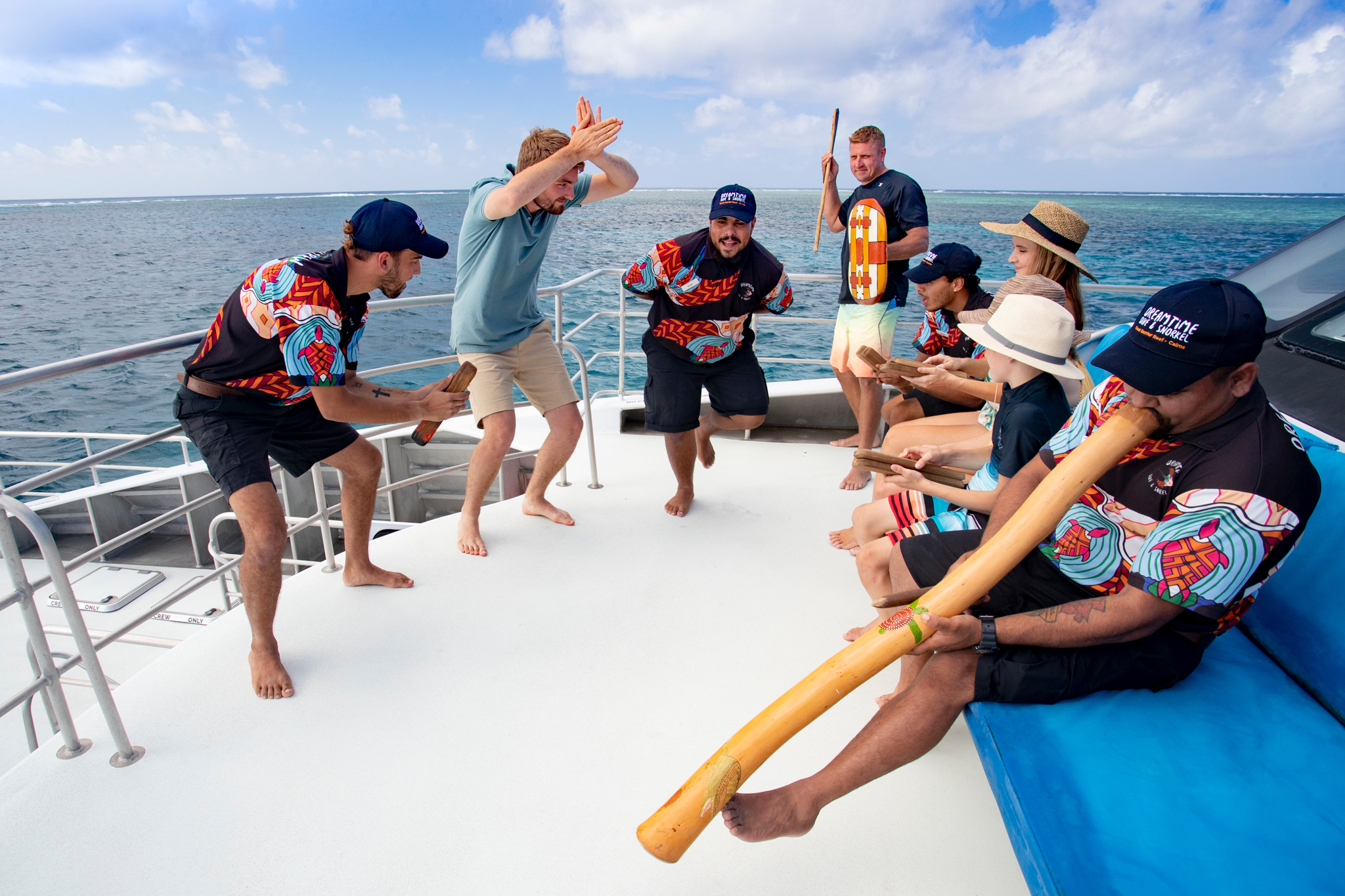
Dreamtime Dive & Snorkel, Great Barrier Reef, QLD © Tourism and Events Queensland
Reef tales
Creed and fellow Indigenous Sea Ranger Lazarus ‘Laz’ Gibson-Friday take us on a glass bottom boat tour of Dog’s Paw Reef, one of the 3000-odd individually named coral reefs that make up the natural icon. Lazarus introduces us to the Great Barrier Reef Creation story.
“You see all this water around us?” he asks, sweeping his arms wide. “This was once rainforest. Where those breaking waves are on the horizon, my ancestors hunted kangaroos. When the sea rose and the Great Barrier Reef was formed, they hunted turtles.”
The Great Barrier Reef Creation story begins with a respected hunter spearing a sacred stingray which infuriated the spirit of the ocean. The sacred stingray flapped its wings, creating large waves and strong winds which caused the sea to rise. The spirit of the ocean unleashed a ferocious storm that threatened to wipe out the hunter’s tribe. His people heated up rocks and boulders with fire and rolled these into the ocean. This barrier they formed appeased the spirit who subsequently calmed the sea which now covers the Great Barrier Reef.
“The Gimuy Walubara Yidinji Dreamtime story is 10,000 years old,” Lazarus comments. “Sir David Attenborough figured out that the coral beneath this boat was 9,000 years old.” Returning to Cairns, I have a deeper understanding of Traditional Owners’ connection with the sea.
